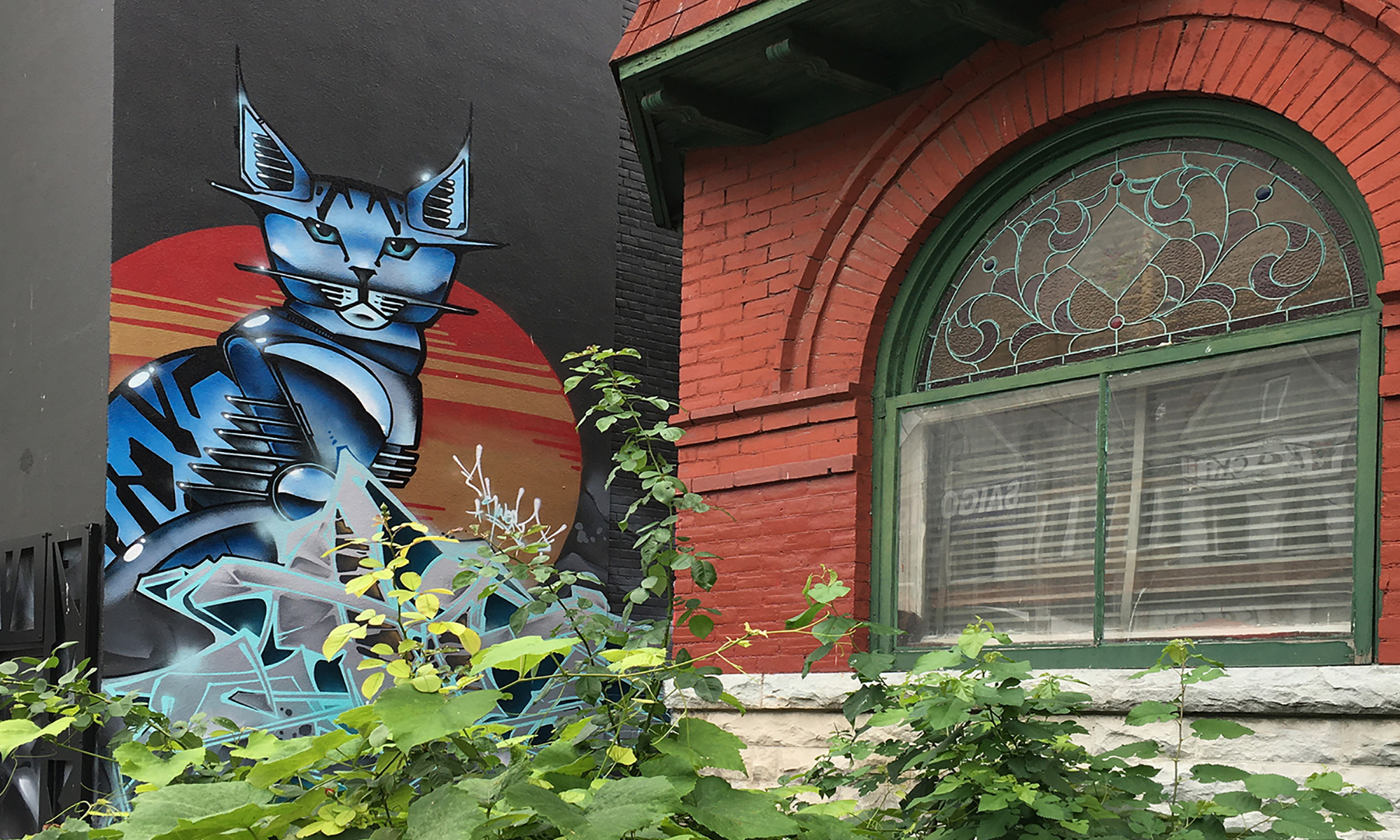Kensington remained a key immigrant reception area in Toronto throughout the 1970s as multiple waves of Indian, Korean, Vietnamese, Filipino, and Spanish-speaking Latin American newcomers settled in both the residential and commercial areas of the Market.[i] Human intake changed during the 1980s, when the neighbourhood experienced an influx of younger Bohemian merchants and students and again in the 1990s with the arrival of a young urban professional cohort.[ii] Recent census data confirms a trend of growing diversity within Kensington’s population, as the Jewish and Portuguese majority groups from the 1950s and 1960s have since migrated to other parts of the city. Approximately 27.4% of the community’s immigrant population arrived to Kensington in the period between 1996 and 2001. This figure represents a 42.1% increase from the years between 1991 and 2001.[iii] The shift in Kensington’s social profile is particularly apparent in a 2006 report by the City of Toronto’s Social Policy Analysis and Research Unit (SPAR) which documented the ten main ethnic groups living in the Kensington-Chinatown neighbourhood has experienced significant change since the mid twentieth century. In descending order, SPAR identified these ten dominant groups as Chinese, English, Scottish, Irish, French, German, Vietnamese, Portuguese and East Indian.[iv] The main conclusion that can be drawn from this data is that Kensington remains a key immigrant reception area within the city of Toronto.
|
Top 10 Ethnic Origins 2006 |
|||
| By Region | Persons | By Ethnic Group | Persons |
| East and Southeast Asian |
8,525 |
Chinese |
7,395 |
| European |
3,765 |
English |
1,515 |
| British Isles |
3,065 |
Scottish |
1,450 |
| Other North American |
1,395 |
Canadian |
1,345 |
| French |
905 |
Irish |
1,340 |
| African |
800 |
French |
895 |
| South Asian |
680 |
German |
735 |
| Caribbean |
650 |
Vietnamese |
620 |
| Arab |
450 |
Portuguese |
575 |
| Latin, Central & South American |
295 |
East Indian |
425 |
| Source: Statistics Canada, Census 2006 © 2008 Copyright City of Toronto. All Rights Reserved.Date of Publication: July 2008 http://www.toronto.ca/demographics/cns_profiles/2006/pdf2/cpa78.pdf |
The ethnic origins displayed in this chart refer to the ethnic or cultural group(s) to which the respondents self-identified. Source: Statistics Canada, 2006 Census.
[i] Barbara, Myrvold. Toronto Public Library, “Historical Walking Tour of Kensington Market & College Street.” Last modified 1993. Accessed January 25, 2013. 15.
[ii] Shaw, Jennifer Lyn. University of Toronto, “Resistance amidst disorganization: Understanding the nature of community organizing in Toronto’s Kensington Market.” Last modified 2005. Accessed January 25, 2013. http://search.proquest.com.myaccess.library.utoronto.ca/docview/305376842/previewPDF?accountid=14771. 7.
[iii] Shaw, 76.
[iv] Statistics Canada, Census 2006 & Census 2001 © 2008 Copyright City of Toronto. All Rights Reserved., “Kensington-Chinatown (78) Social Profile #2 – Neighbourhoods Language & Ethnicity Top 10 Recent Immigrants 2006.” Last modified 2008. Accessed January 30, 2013. http://www.toronto.ca/demographics/cns_profiles/2006/pdf2/cpa78.pdf
